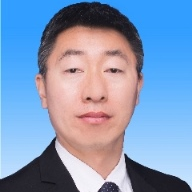Laser-Induced Surface Modification
A special issue of Crystals (ISSN 2073-4352). This special issue belongs to the section "Crystal Engineering".
Deadline for manuscript submissions: closed (25 August 2023) | Viewed by 4646
Special Issue Editors
Interests: additive manufacturing; laser shock peening; microstructural characterization
Interests: laser cladding; impact wear; wear resistant coating; impact strengthening; hardening behavior
Special Issues, Collections and Topics in MDPI journals
Interests: laser materials processing; materials engineering; manufacturing engineering; metallurgical engineering
Interests: Ni-based superalloy; metal additive manufacturing; microstructure evolution; mechanical property
Special Issues, Collections and Topics in MDPI journals
Special Issue Information
Dear Colleagues,
Due to the unique properties of laser, since its development in the middle of the 20th century, it has been widely used in science and technology research and industrial production. Laser surface modification is a new application of laser in the field of surface technology which can greatly improve the hardness, wear resistance, and corrosion resistance of metal materials’ surfaces. The microstructure formed after laser melting has high chemical uniformity and a very fine grain, which strengthens the alloy and greatly improves wear resistance. Therefore, in the field of surface treatment, the research and development of laser surface modification is quite active. After decades of development, laser surface modification technology, such as laser shock processing, laser quenching, femtosecond laser processing, and laser cladding, has been widely applied to aerospace, petrochemical, energy, transportation, metallurgy, and other fields. In this Special Issue, studies on recent advances in laser-induced surface modification of metallic parts formed through conventional or additive manufacturing is welcome.
Dr. Liang Lan
Dr. Haifeng Yang
Dr. Guoxin Lu
Dr. Shuang Gao
Guest Editors
Manuscript Submission Information
Manuscripts should be submitted online at www.mdpi.com by registering and logging in to this website. Once you are registered, click here to go to the submission form. Manuscripts can be submitted until the deadline. All submissions that pass pre-check are peer-reviewed. Accepted papers will be published continuously in the journal (as soon as accepted) and will be listed together on the special issue website. Research articles, review articles as well as short communications are invited. For planned papers, a title and short abstract (about 100 words) can be sent to the Editorial Office for announcement on this website.
Submitted manuscripts should not have been published previously, nor be under consideration for publication elsewhere (except conference proceedings papers). All manuscripts are thoroughly refereed through a single-blind peer-review process. A guide for authors and other relevant information for submission of manuscripts is available on the Instructions for Authors page. Crystals is an international peer-reviewed open access monthly journal published by MDPI.
Please visit the Instructions for Authors page before submitting a manuscript. The Article Processing Charge (APC) for publication in this open access journal is 2600 CHF (Swiss Francs). Submitted papers should be well formatted and use good English. Authors may use MDPI's English editing service prior to publication or during author revisions.
Keywords
- laser surface modification
- laser shock processing
- laser cladding
- femtosecond laser processing
- additive manufacturing








